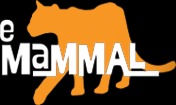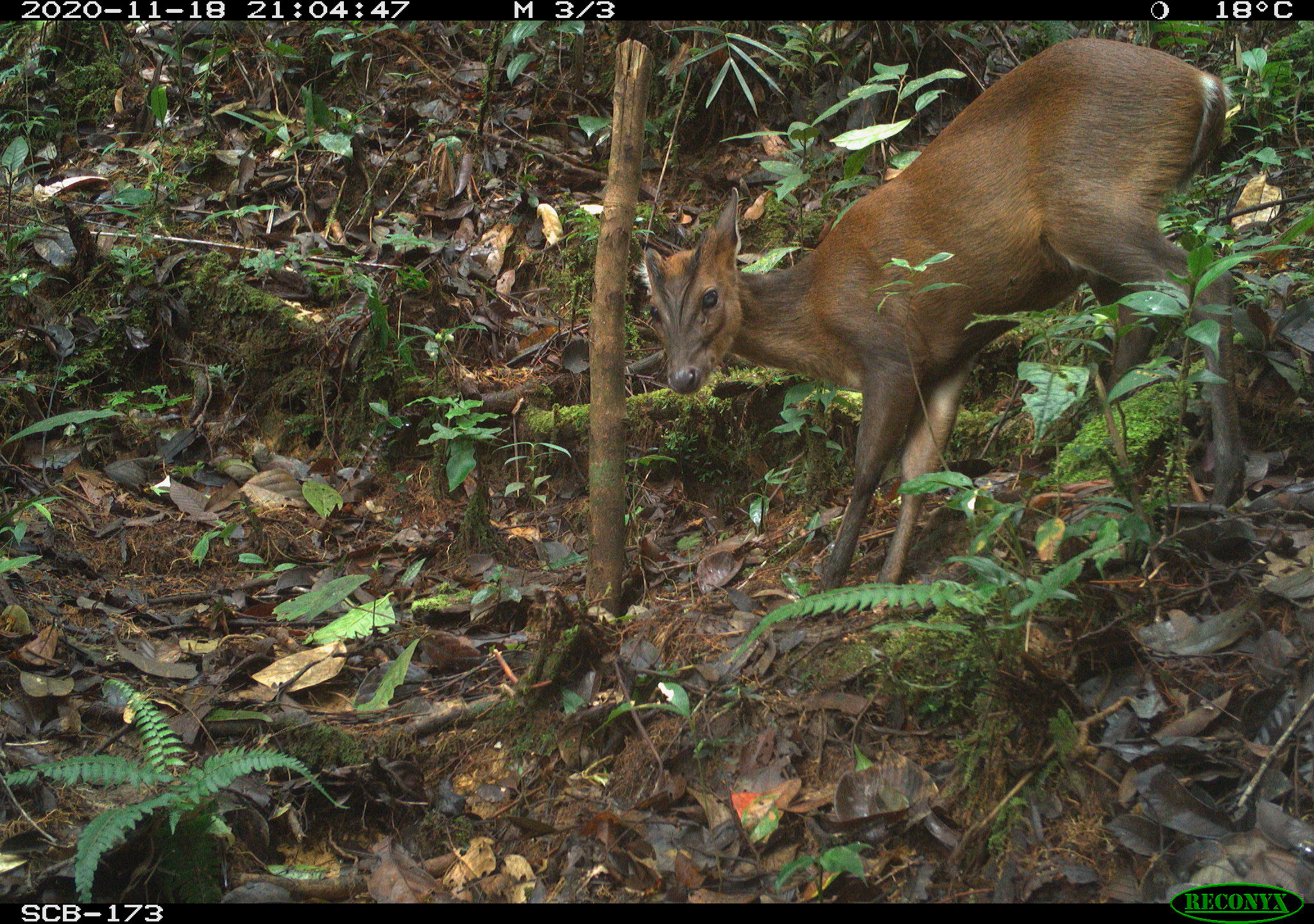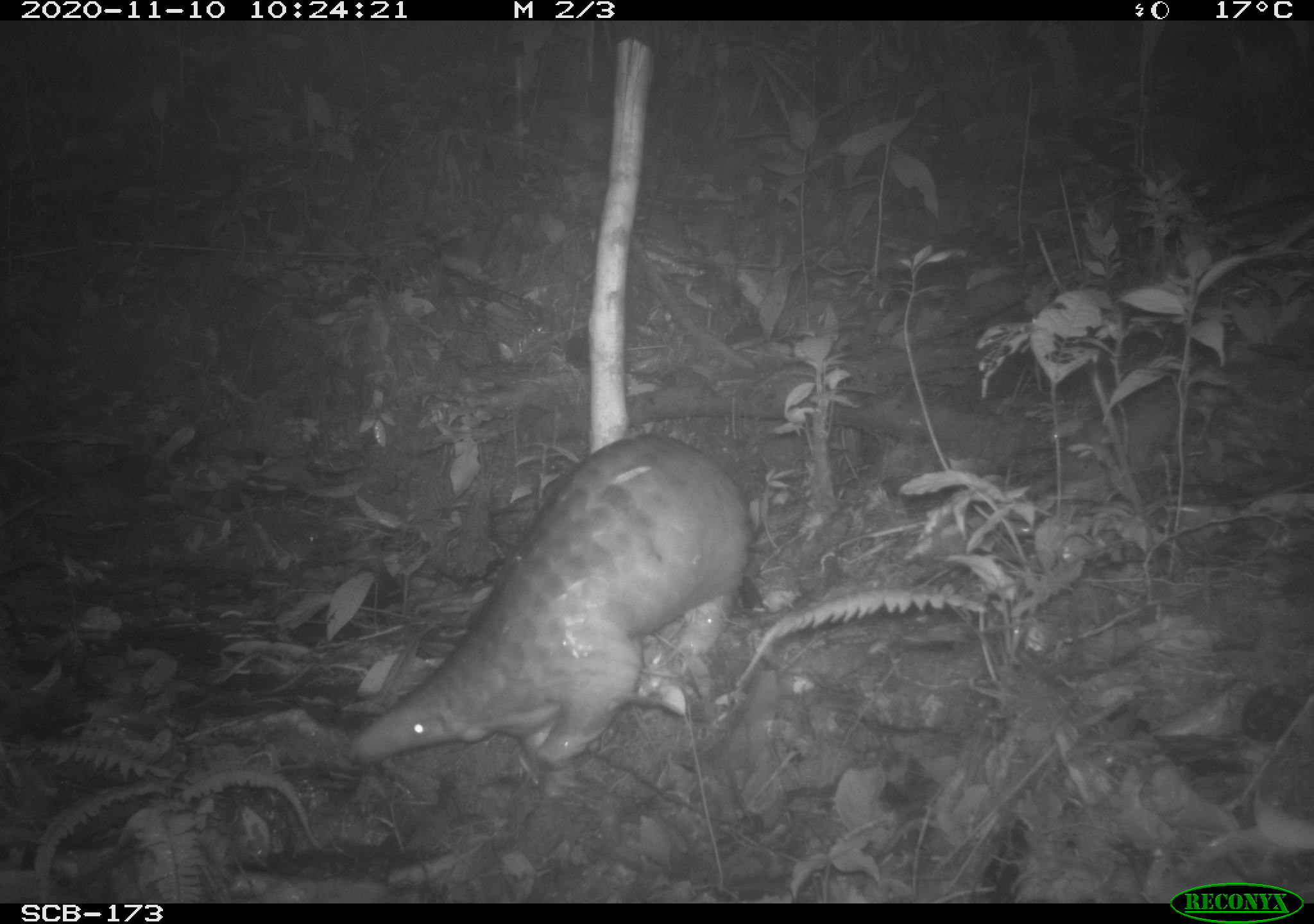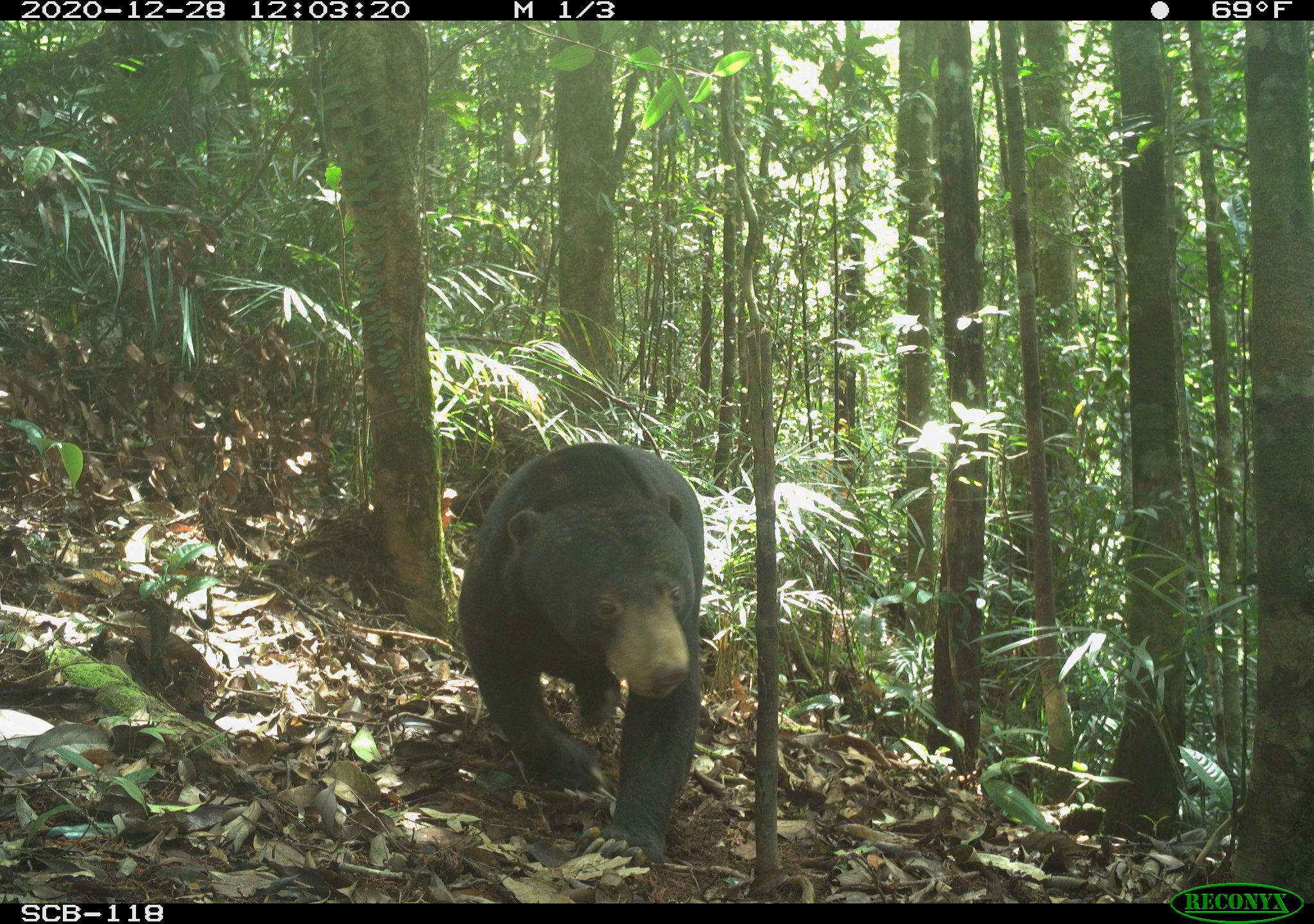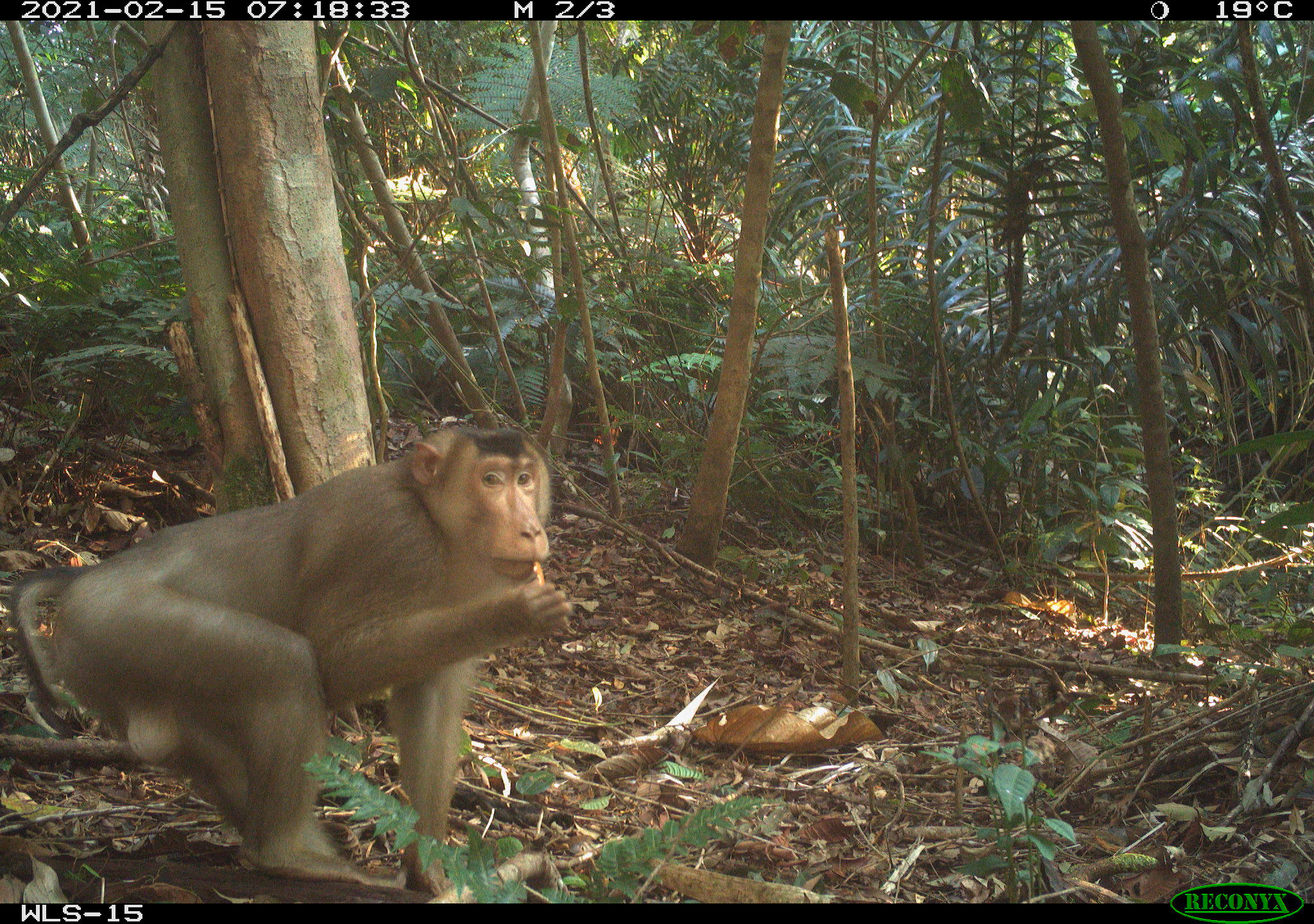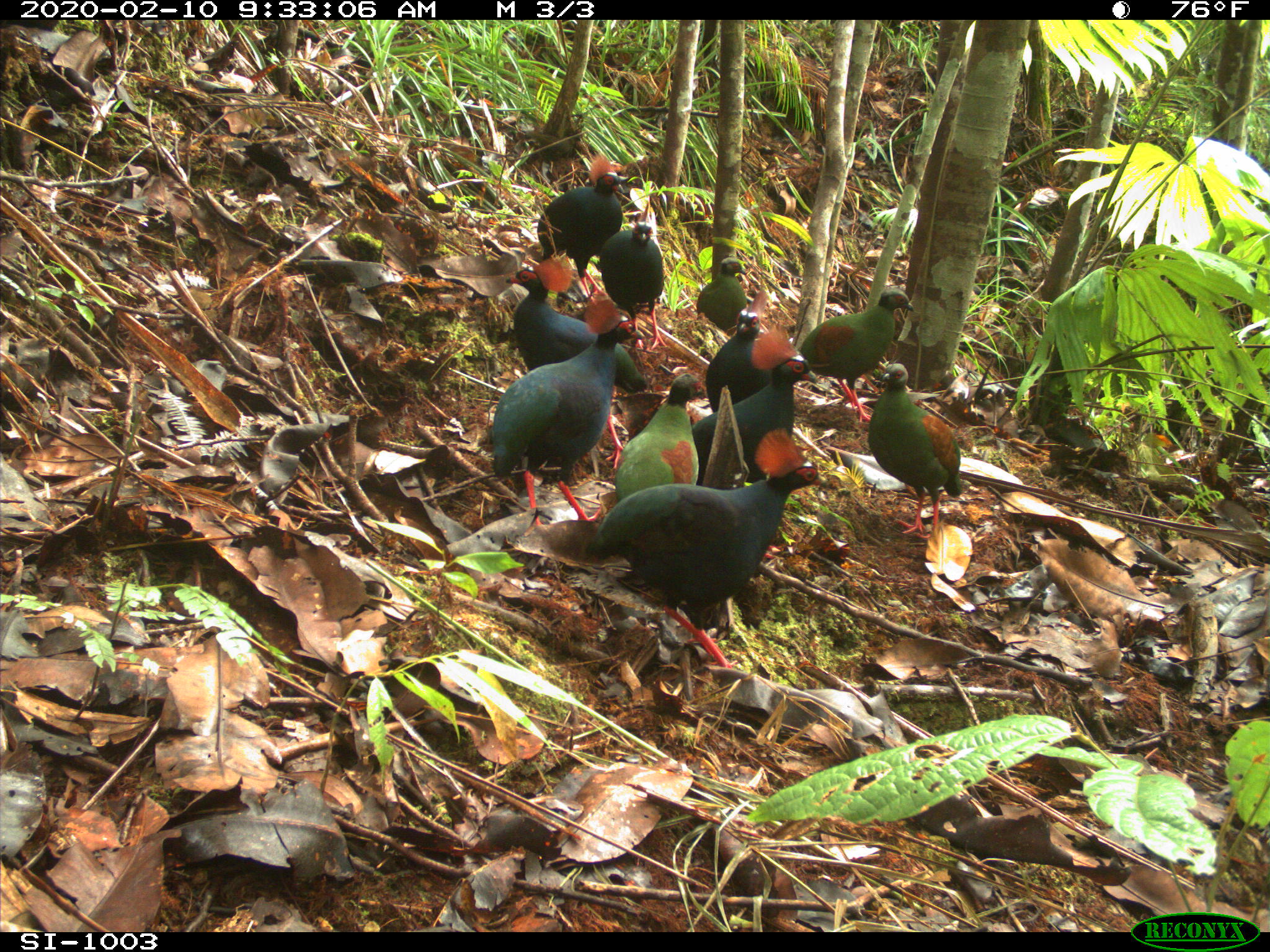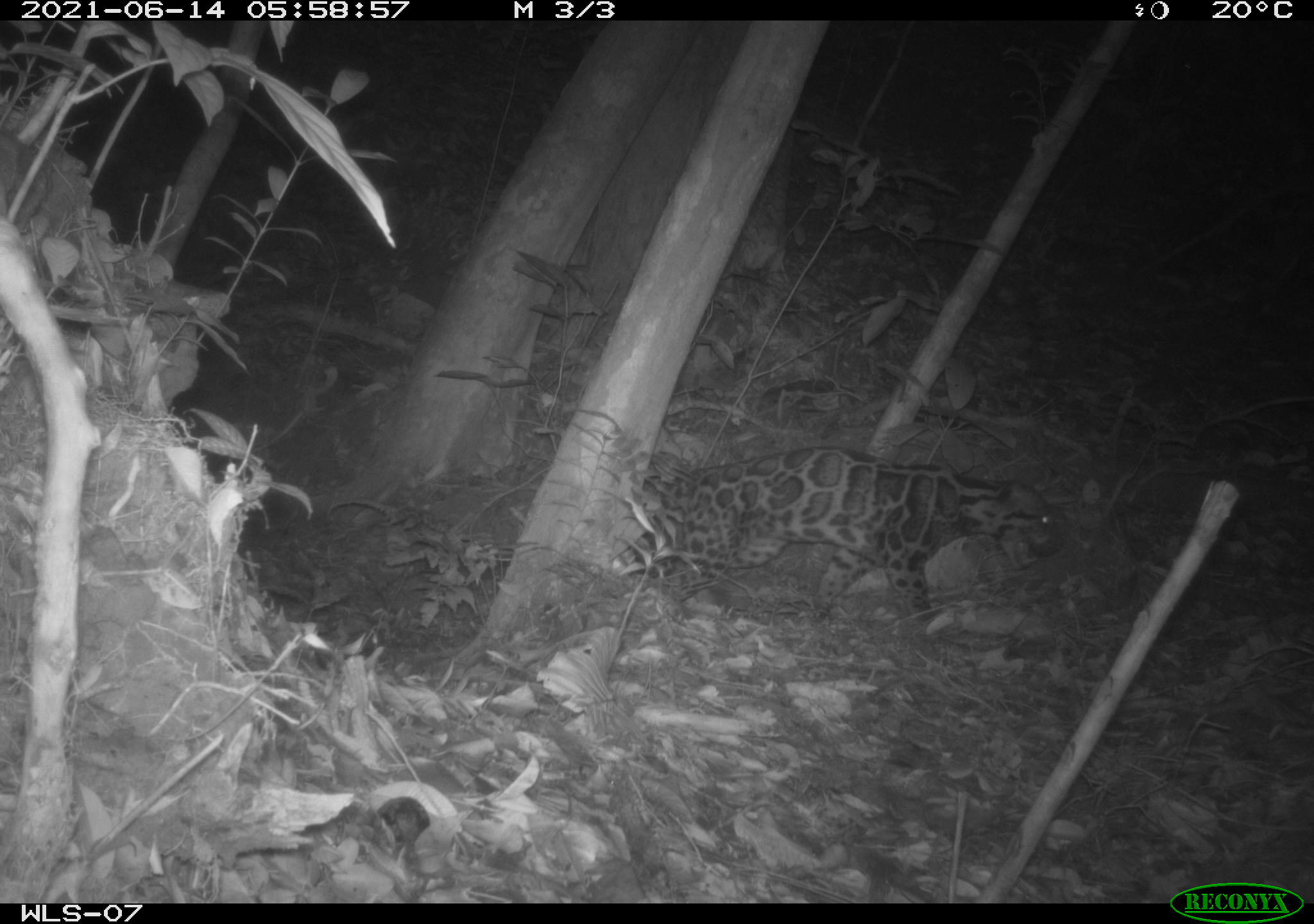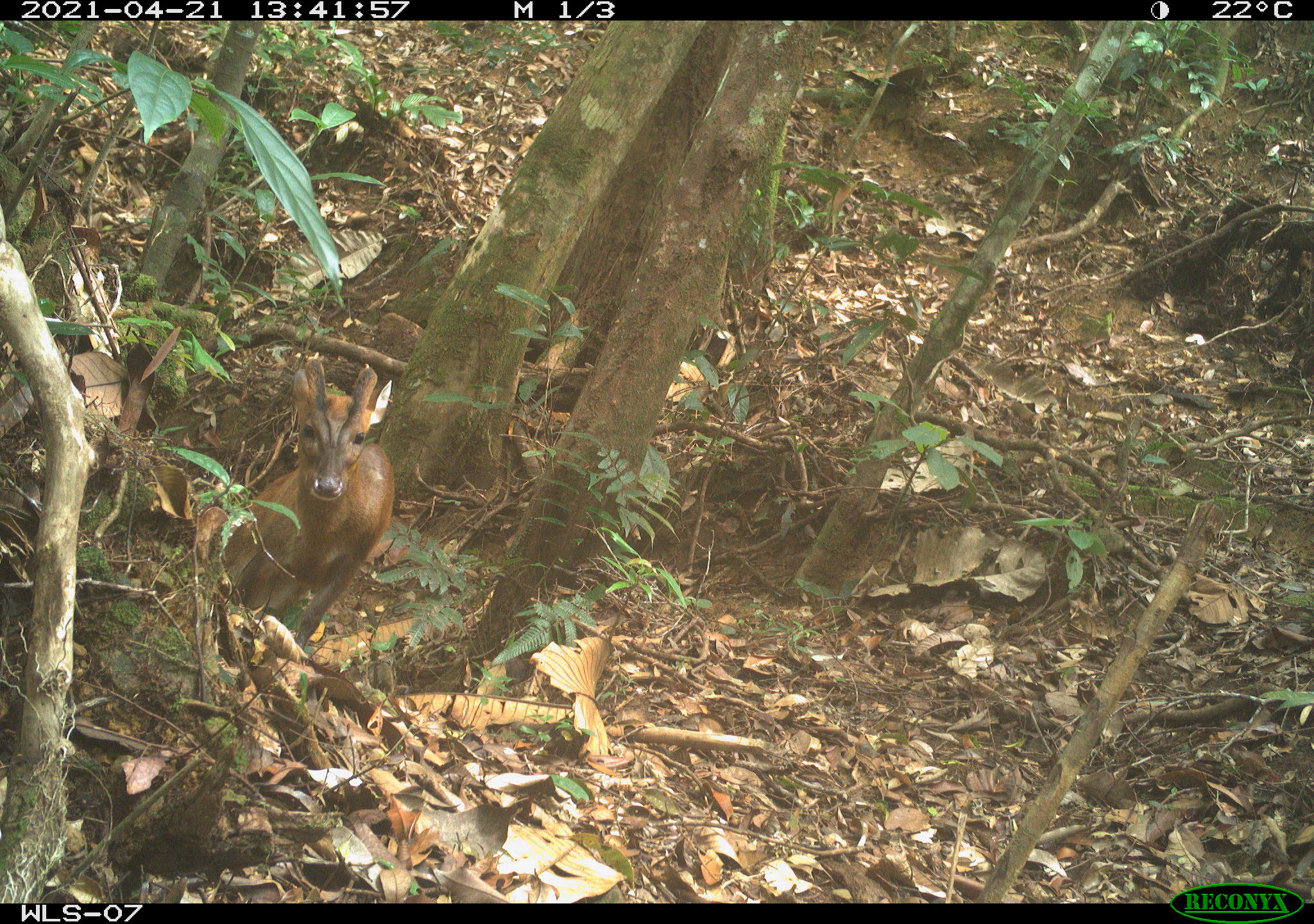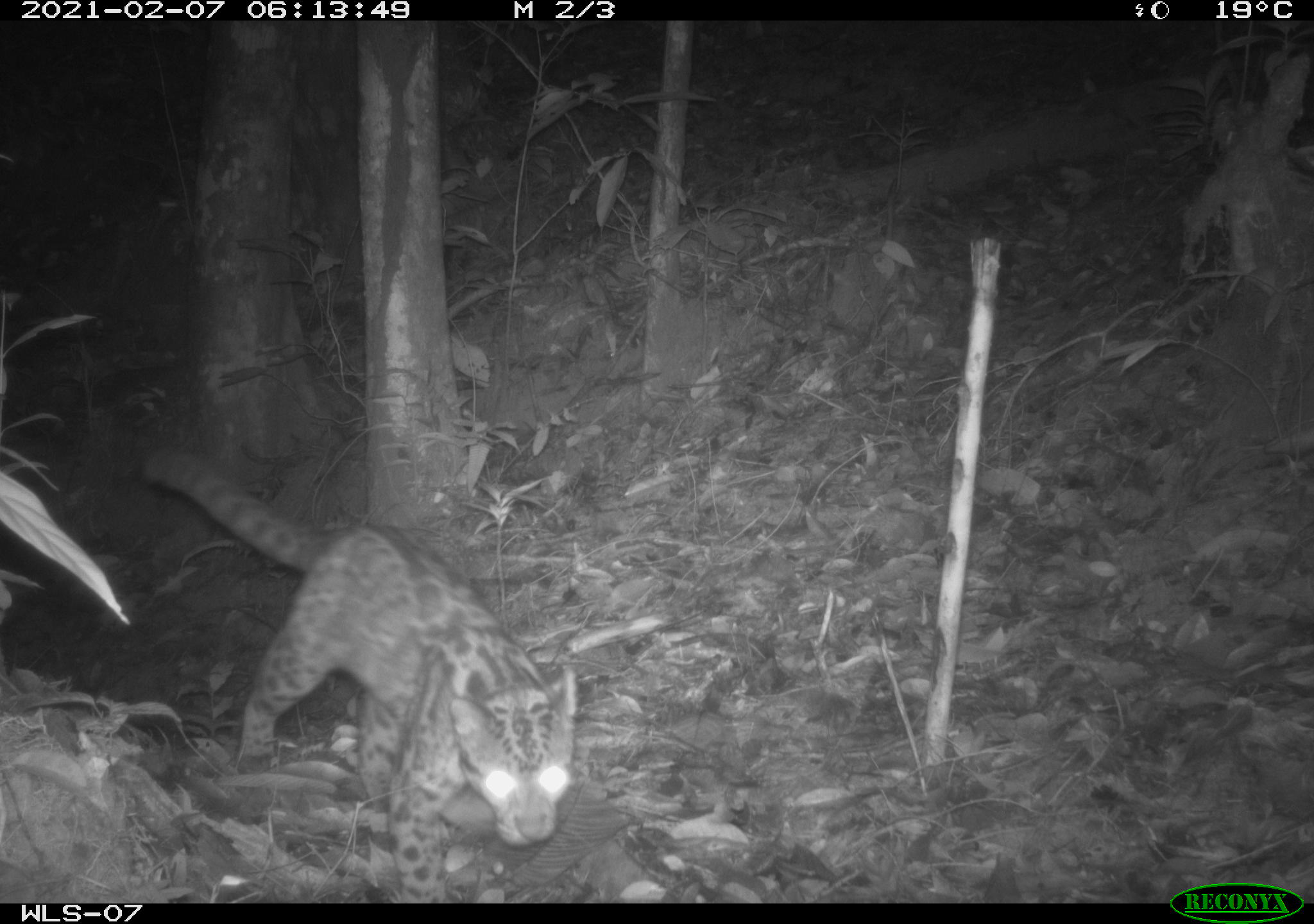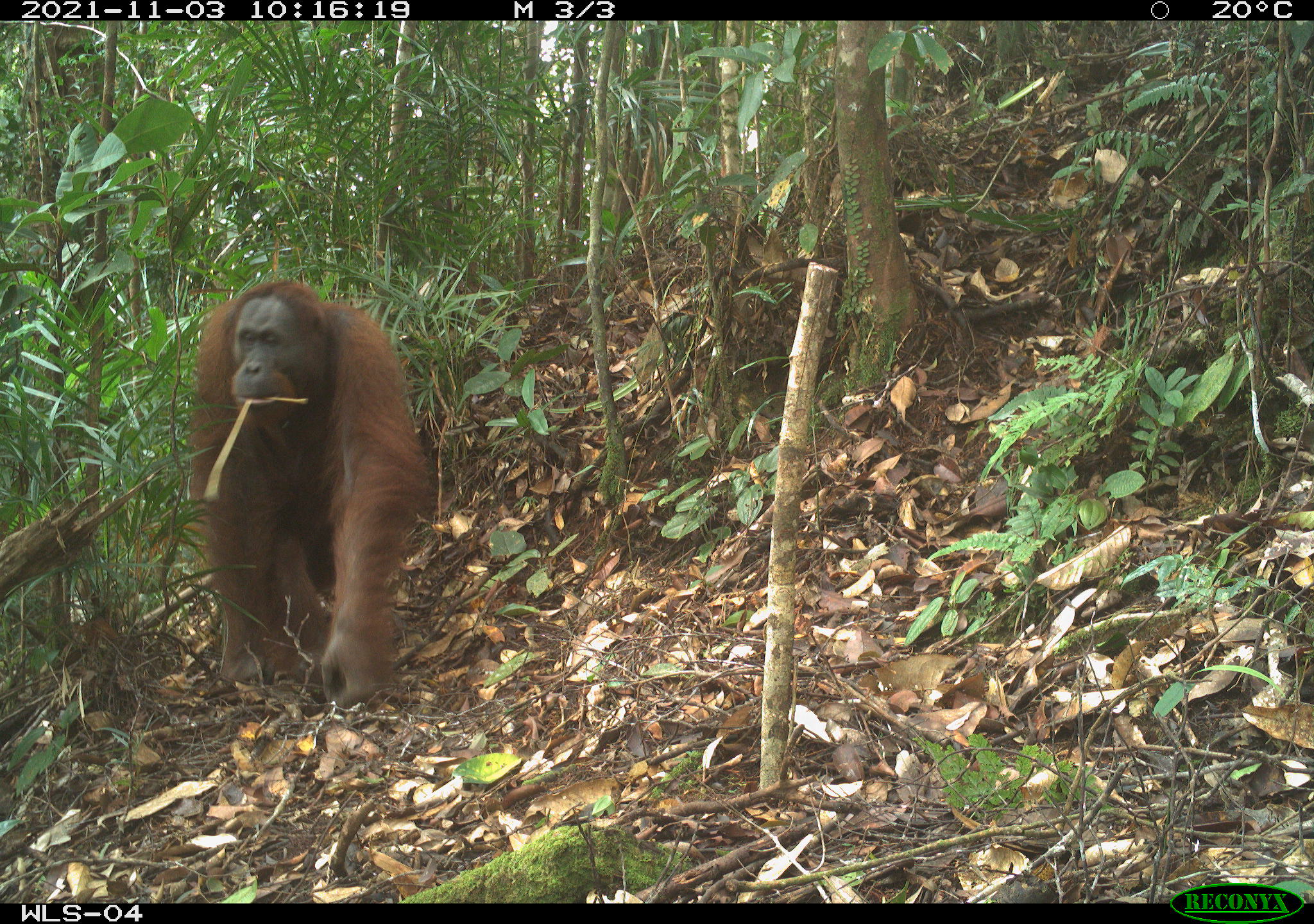Smithsonian Borneo Mammal Survey at LEWS Project
This 3-year project seeks to survey the distribution of large mammals in primary and human-impacted (logging, cultivation, etc.) forests both within and adjacent to Lanjak Entimau Wildlife Sanctuary (LEWS), in Sarawak, Malaysia (a portion of Borneo).
LEWS is part of a 1.1 million ha transboundary region with large tracts of primary dipterocarp forest. The region has a large ethnic community with traditional hunting rights. Our intent is to understand the extent to which wildlife shift between primary and secondary forests depending on annual variation in fruit and seed production. Both primary and secondary forests contain fruiting trees, but for many of these species their annual fruiting cycle is unknown. We will track fruit and seed production, as well as large mammals foraging under these trees through 3 annual cycles of seed production. We focus on two groups of terrestrial mammals: Species dependent on fruit consumption on the forest floor (deer and pigs) or in trees (sun bears); and the predators dependent on the many smaller mammals (arboreal and terrestrial rodents) whose abundance cycle should track fruit and seed production (clouded leopards and mesocarnivores). The relative seed production of primary and secondary forests should dictate the distribution of large mammals dependent on these resources.
Humans have a role in this dynamic, as reliance on secondary forest infers a co-dependence on human activities that create secondary forest. An added complication is active agricultural sites will attract many of these mammals during periods of fruit or seed failure inside the protected area. Maintaining large mammal species in protected areas is a primary concern across the developing world. In tropical regions of Asia, the high density of humans and the conversion of natural forests to plantation forests makes protection outside of protected areas problematic. Inside protected areas, where illegal logging has been controlled, the major threats come from unsustainable use of non- timber products and illegal harvest of wildlife by local villagers and outside hunters. As forests outside of protected areas become degraded and over-hunted, pressure increases on protected forests to provide local villagers with wildlife for cultural, subsistence, and commercial use.
We are using camera traps and strip transects to collect data on five focal large mammals that are hunted by local people: sun bears (Helarctos malayanus), sambar (Rusa unicolor), muntjacs (Muntiacus muntjak and M. atherodes), and bearded pigs (Sus barbatus).These field activities are being conducted with the participation of protected area staff from Sarawak Forestry Cooperation (SFC), and communities that live around LEWS, who actively hunt all of these species. Our aim is not to prevent these rural communities from hunting, but rather to advocate for sustainable hunting of specific common and fast reproducing species (such as pigs). This will be coupled with providing employment and assistance in developing economic opportunities that meet the needs of these communities. We want to understand the motivation and goals of hunters and try to meet those goals by improving knowledge and skills related to the targeted species. At the end of the study, we hope to understand the effects of human-impacted and primary forests on the distribution of large mammals that are hunted by humans, and how hunting practices could be modified in a practical way to provide a consistent and higher level of offtake. Wildlife can only persist at LEWS if humans become more sustainable in their use of natural products.
LEWS is part of a 1.1 million ha transboundary region with large tracts of primary dipterocarp forest. The region has a large ethnic community with traditional hunting rights. Our intent is to understand the extent to which wildlife shift between primary and secondary forests depending on annual variation in fruit and seed production. Both primary and secondary forests contain fruiting trees, but for many of these species their annual fruiting cycle is unknown. We will track fruit and seed production, as well as large mammals foraging under these trees through 3 annual cycles of seed production. We focus on two groups of terrestrial mammals: Species dependent on fruit consumption on the forest floor (deer and pigs) or in trees (sun bears); and the predators dependent on the many smaller mammals (arboreal and terrestrial rodents) whose abundance cycle should track fruit and seed production (clouded leopards and mesocarnivores). The relative seed production of primary and secondary forests should dictate the distribution of large mammals dependent on these resources.
Humans have a role in this dynamic, as reliance on secondary forest infers a co-dependence on human activities that create secondary forest. An added complication is active agricultural sites will attract many of these mammals during periods of fruit or seed failure inside the protected area. Maintaining large mammal species in protected areas is a primary concern across the developing world. In tropical regions of Asia, the high density of humans and the conversion of natural forests to plantation forests makes protection outside of protected areas problematic. Inside protected areas, where illegal logging has been controlled, the major threats come from unsustainable use of non- timber products and illegal harvest of wildlife by local villagers and outside hunters. As forests outside of protected areas become degraded and over-hunted, pressure increases on protected forests to provide local villagers with wildlife for cultural, subsistence, and commercial use.
We are using camera traps and strip transects to collect data on five focal large mammals that are hunted by local people: sun bears (Helarctos malayanus), sambar (Rusa unicolor), muntjacs (Muntiacus muntjak and M. atherodes), and bearded pigs (Sus barbatus).These field activities are being conducted with the participation of protected area staff from Sarawak Forestry Cooperation (SFC), and communities that live around LEWS, who actively hunt all of these species. Our aim is not to prevent these rural communities from hunting, but rather to advocate for sustainable hunting of specific common and fast reproducing species (such as pigs). This will be coupled with providing employment and assistance in developing economic opportunities that meet the needs of these communities. We want to understand the motivation and goals of hunters and try to meet those goals by improving knowledge and skills related to the targeted species. At the end of the study, we hope to understand the effects of human-impacted and primary forests on the distribution of large mammals that are hunted by humans, and how hunting practices could be modified in a practical way to provide a consistent and higher level of offtake. Wildlife can only persist at LEWS if humans become more sustainable in their use of natural products.
